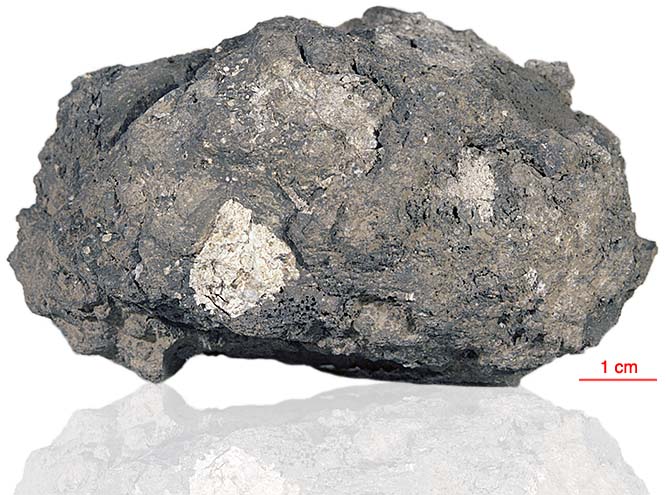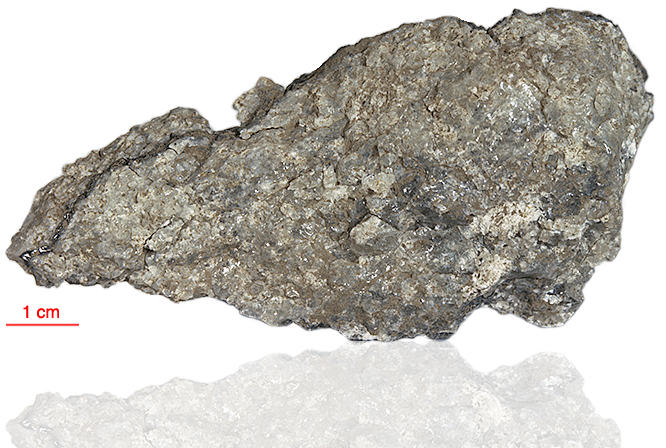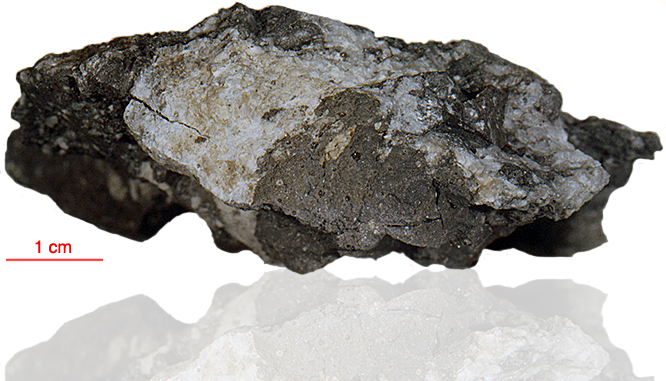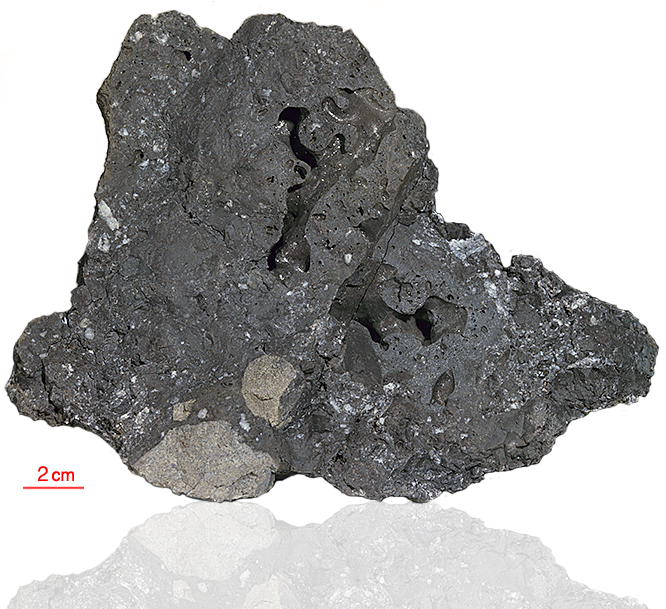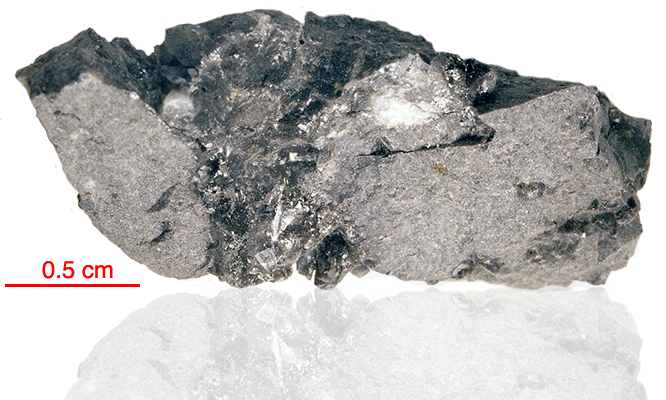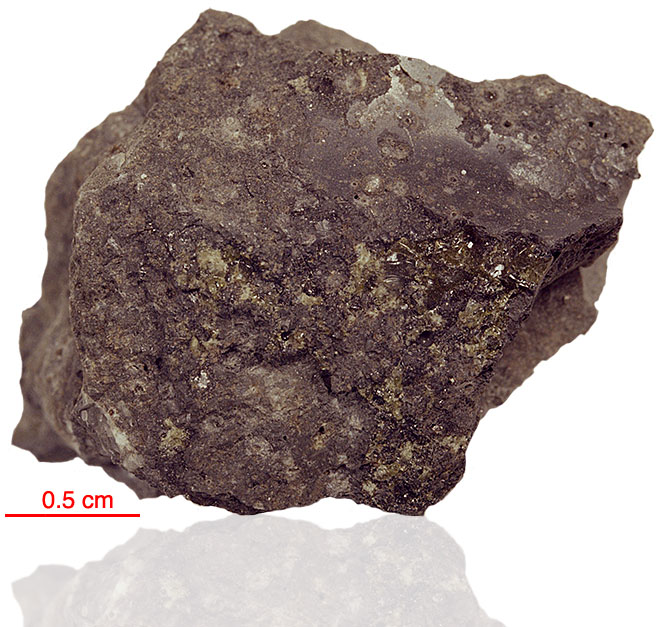
Fact sheet
67955 was chipped from a large white clast and returned to Earth in several friable pieces. The exterior surface has a thin brown patina with micrometeorite pits. Texturaly the fragments show considerable variation (the terms poikiloblastic, granulitic and hornfels have been used) with some clasts reaching 1.5 cm across. Our thin section is taken from a finer-grained fragment. It is brecciated and has thin black glass veins, but the mineralogy indicates it is a fragment of plutonic rock. Rotation 1 shows a considerably shocked plagioclase associated with smaller clasts of olivine and pyroxene. Rotation 2 focuses on two pale brown fragments of glassy impact melt. Ilmenite and metallic iron fragments are visible in reflected light.
The sample weighed 163 grams before analysis and has been dated at 4.20±0.07 (Sm/Nd).
Further details of this and other Apollo samples are here: http://curator.jsc.nasa.gov/lunar/
The dendritic structure at the bottom of the thin section is a polishing artifact.
The Apollo 16 landing site was in the hilly region around Descartes crater in the lunar highlands. The landing spot was chosen to allow the astronauts to gather geologically older lunar material (Descartes Formation and the Cayley Formation) than the samples obtained in the first four landings, which were in or near lunar maria.
The mission lasted 11.1 days, with a stay on the lunar surface of 71 hours. The crew were on the lunar surface for 20.2 hours during which they traversed approximately 27 kilometers and collected approximately 96 kilograms of samples.
Apollo 16 was launched on 16 April 1972.
